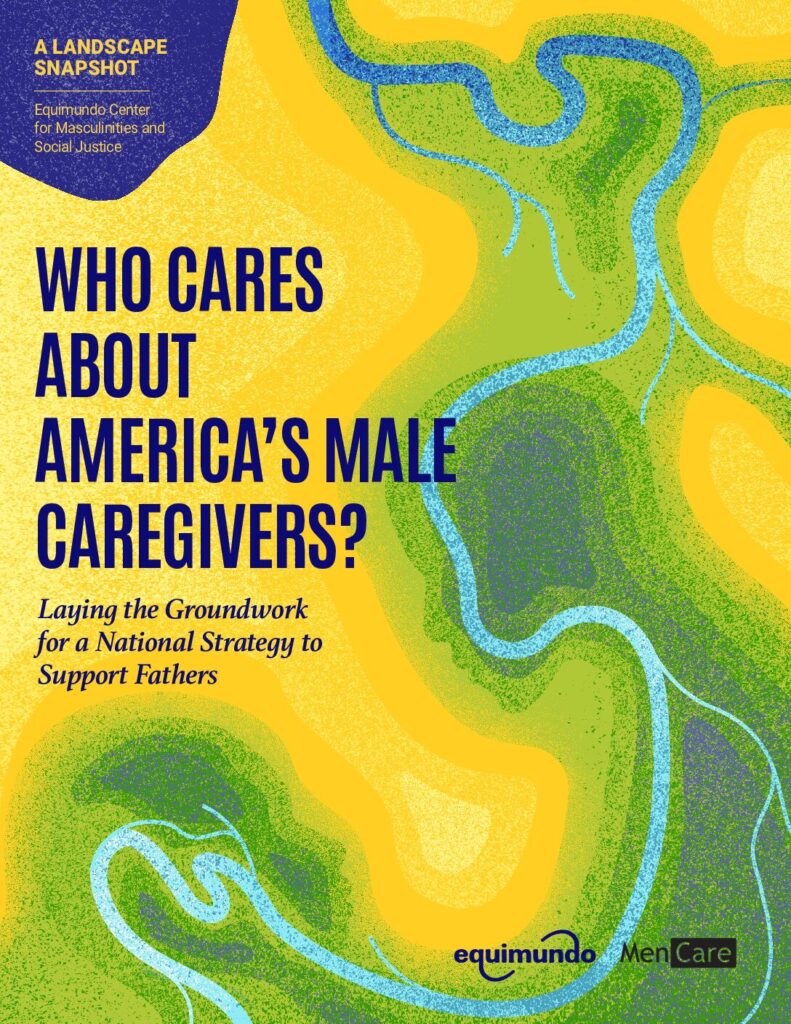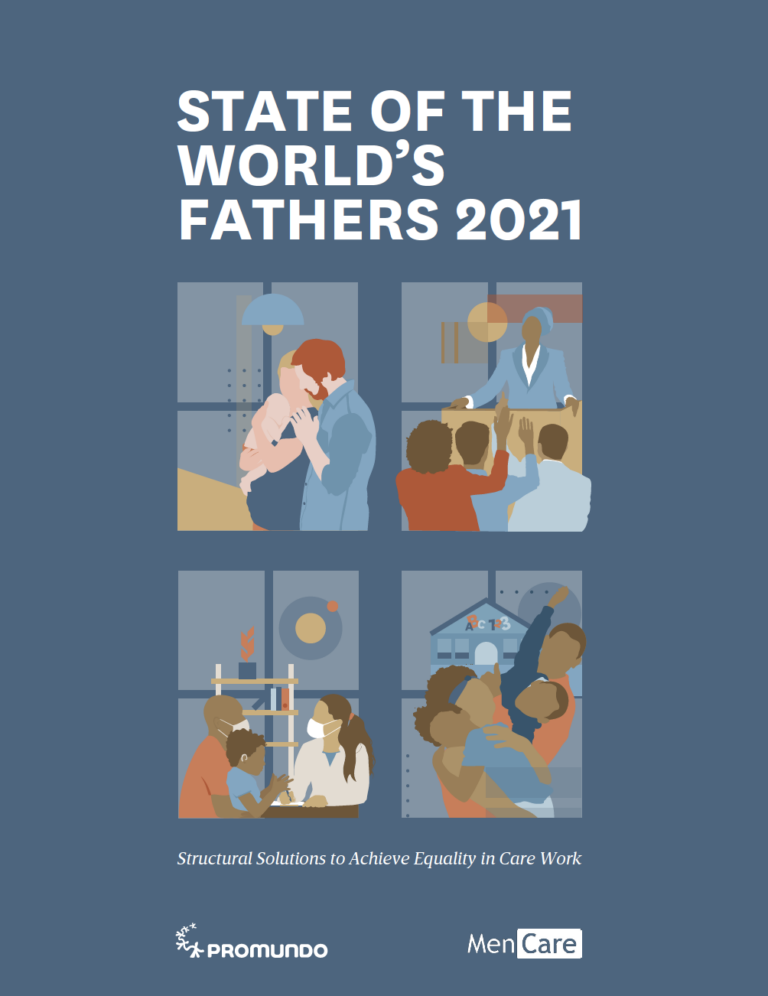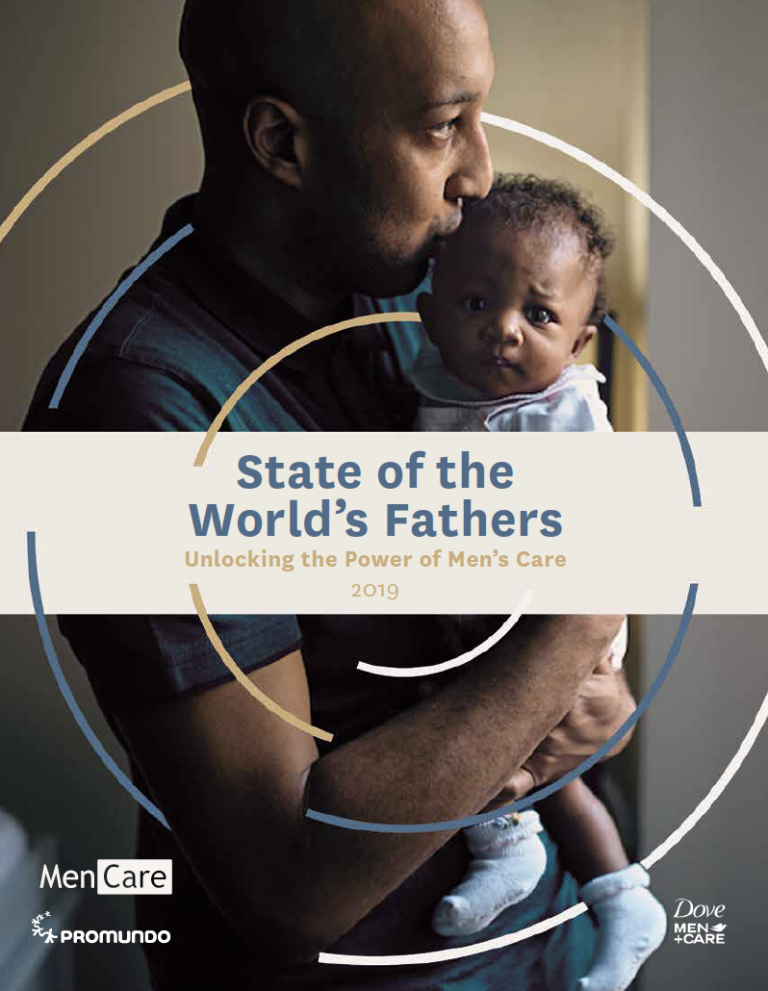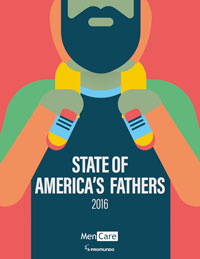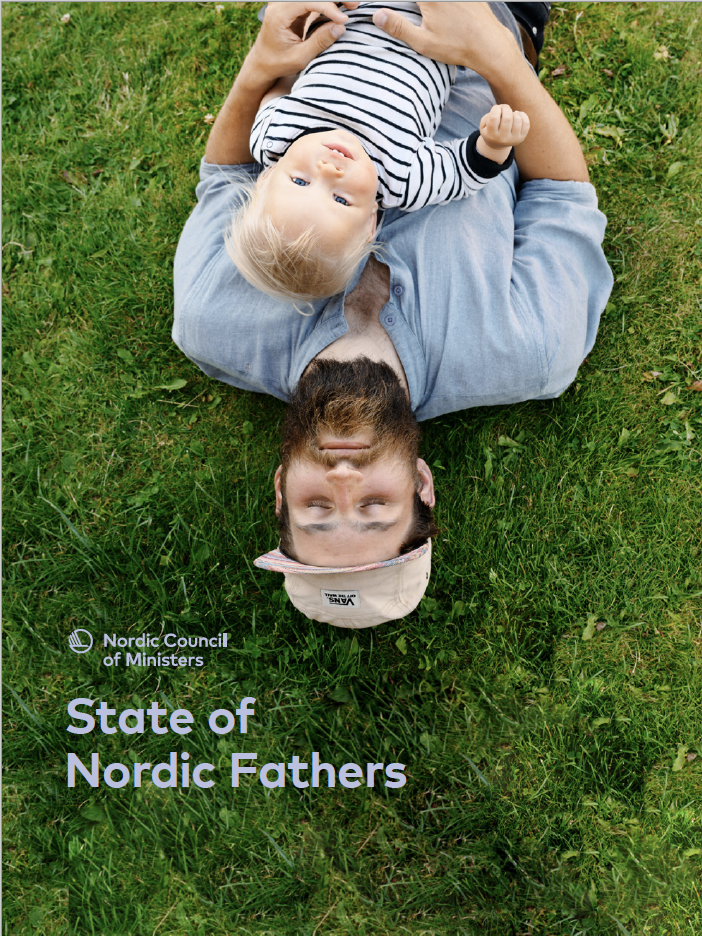As a country, we in the US face a storm of overlapping crises, resulting in exhaustion, grief, stresses on our mental health, polarization, and pessimism. In moments of crisis, we often seek to identify a single root issue, which if addressed, might turn the tide and find us in calmer waters. Caring for each other – in our homes, workplaces, schools, and elsewhere – is something that we all need and that helps us all thrive. Our households have felt even more overburdened in terms of care throughout these past few years of pandemic. Care has become more visible and even more obviously central to our lives as we’ve schooled our kids at home, seen our homes turned into makeshift offices and classrooms, and worried about our work, education, relationships, and futures. In this context, the lack of support for all caregivers has become even more apparent. This report asks: what is the current landscape of programs, approaches, and platforms for supporting fatherhood and men’s caregiving in the US? We take a snapshot of this field as a step toward building greater coordination and collaboration across those working in fatherhood and male caregiving in the US. We also provide recommendations for greater attention to this vital space and issue. The US landscape of fatherhood and support for men’s caregiving is a small one relative to the country’s size and the scope of related issues. For an area so vital to so many households – and one so strongly related to family poverty and gender equality – funders and governments pay far too little attention to fatherhood and men’s caregiving. Our research has led to the following key conclusions:
- First, there are many organizations and individuals – from bloggers, individual authors, and activists to small and large organizations to university-based researchers to workplace-funded initiatives – focusing on fatherhood and men’s caregiving. But numerous factors are contributing to clustering, isolation, or other shortfalls in terms of connecting around their common cause.
- Second, a handful of networking organizations are disseminating research and sharing resources, but despite thoughtful work, these clearinghouses are only able to reach relatively small numbers of fathers and male caregivers given a combination of infrastructure barriers and the often-disconnected state of the men who would be their prime audience.
- Third, the funding stream for fatherhood programming is relatively small, both at various levels of government as well as from philanthropy.
- Fourth, participants in this landscape analysis affirmed the need to support fathers and men’s caregiving alongside and in common cause with mothers, women’s caregiving, and women’s equality and well-being – all on behalf of the evident benefits to children.
As such, we propose a national effort toward achieving healthy expressions of masculinity and greater equality and social justice in the US by focusing on men’s capacity to give care, which often (but not exclusively) manifests in the practice of fatherhood in all its diversity.
